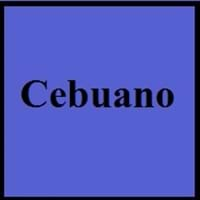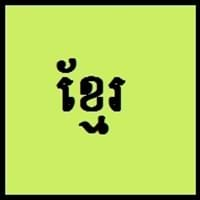Cebuano and Khmer
Countries
Philippines
Cambodia
National Language
Philippines
Cambodia, Thailand, Vietnam
Second Language
Philippines
Not spoken in any of the countries
Speaking Continents
Asia
Asia
Minority Language
Not spoken in any of the countries
Australia, France, United States of America
Regulated By
Visayan Academy of Arts and Letters
Not Available
Interesting Facts
- About one-fifth of the population of the philippines speak cebuano and are second largest ethnolinguistic group in the country.
- Cebuano contains many words of Spanish origin.
- Khmer is not the tonal language.
- Khmer language has borrowed philisophical, administrative and technical vocabulary from Sanskrit and Pali.
Similar To
Hiligaynon Language
Lao Language
Derived From
Island of Cebu
Pali and Sanskrit Languages
Alphabets in
Cebuano-Alphabets.jpg#200
Khmer-Alphabets.jpg#200
Writing Direction
Not Available
Left-To-Right, Horizontal
Thank You
Salamat
សូមអរគុណអ្នក (saum arkoun anak)
How Are You?
Kumusta man ka?
អ្នកសុខសប្បាយទេ
Good Night
Maayong Gabii
ND
Good Evening
Maayong Gabii
ND
Good Afternoon
Maayong Hapon
ND
Good Morning
Maayong Buntag
ND
I Love You
Gihigugma ko ikaw
ND
Dialect 1
Boholano
Northern Khmer
Where They Speak
Bohol
Australia, Cambodia, France, Thailand, United States of America
How Many People Speak
Not Available
Dialect 2
Southern Kana
Khmer Krom
Where They Speak
southern Leyte
Vietnam
How Many People Speak
Not Available
Dialect 3
North Kana
Western Khmer
Where They Speak
northern part of Leyte
Cambodia, Thailand
How Many People Speak?
Not Available
Second Language Speakers
Not Available
Native Name
Visayan
ភាសាខ្មែរ (bhāsā khmɛ̄r)
Alternative Names
Binisaya, Bisayan, Sebuano, Sugbuanon, Sugbuhanon, Visayan
Cambodian, Khmer
French Name
cebuano
khmer central
German Name
Cebuano
Kambodschanisch
Pronunciation
Not Available
[pʰiːəsaː kʰmaːe]
Ethnicity
Cebuano people
Khmer, Northern Khmer
Language Family
Austronesian Family
Austroasiatic Family
Subgroup
Not Available
Not Available
Branch
Not Available
Not Available
Early Forms
No early forms
Proto-Khmer
Standard Forms
Standard Cebuano
Modern Khmer
Language Position
Not Available
Signed Forms
Not Available
Not Available
Scope
Individual
Individual
ISO 639 1
No data Available
km
ISO 639 6
Not Available
Not Available
Glottocode
cebu1242
khme1253
Linguasphere
No data Available
Not Available
Language Type
Living
Living
Language Linguistic Typology
Verb-Subject-Object
Subject-Verb-Object
Language Morphological Typology
Not Available
Analytic, Isolating
All Cebuano and Khmer Dialects
Most languages have dialects where each dialect differ from other dialect with respect to grammar and vocabulary. Here you will get to know all Cebuano and Khmer dialects. Various dialects of Cebuano and Khmer language differ in their pronunciations and words. Dialects of Cebuano are spoken in different Cebuano Speaking Countries whereas Khmer Dialects are spoken in different Khmer speaking countries. Also the number of people speaking Cebuano vs Khmer Dialects varies from few thousands to many millions. Some of the Cebuano dialects include: Boholano, Southern Kana. Khmer dialects include: Northern Khmer , Khmer Krom. Also learn about dialects in South American Languages and North American Languages.
Cebuano and Khmer Speaking population
Cebuano and Khmer speaking population is one of the factors based on which Cebuano and Khmer languages can be compared. The total count of Cebuano and Khmer Speaking population in percentage is also given. The percentage of people speaking Cebuano language is 0.32 % whereas the percentage of people speaking Khmer language is 0.24 %. When we compare the speaking population of any two languages we get to know which of two languages is more popular. Find more details about how many people speak Cebuano and Khmer on Cebuano vs Khmer where you will get native speakers, speaking population in percentage and native names.
Cebuano and Khmer Language Codes
Cebuano and Khmer language codes are used in those applications where using language names are tedious. Cebuano and Khmer Language Codes include all the international language codes, glottocodes and linguasphere.





